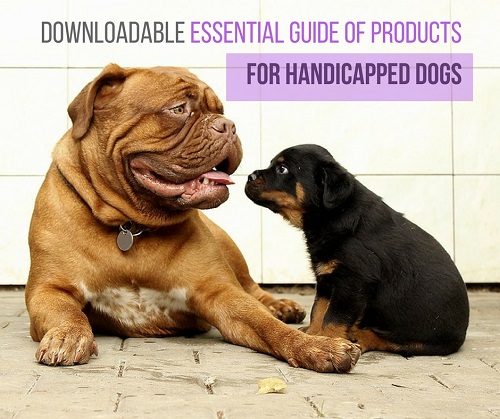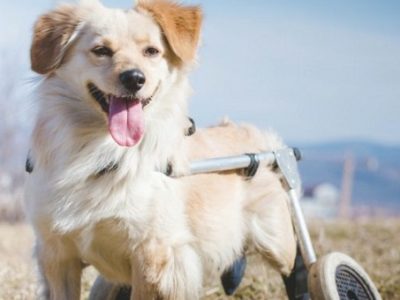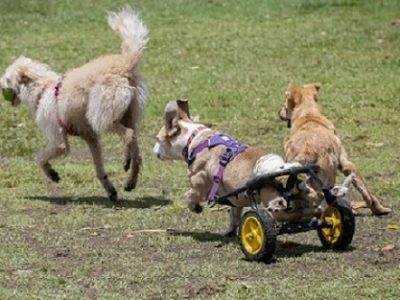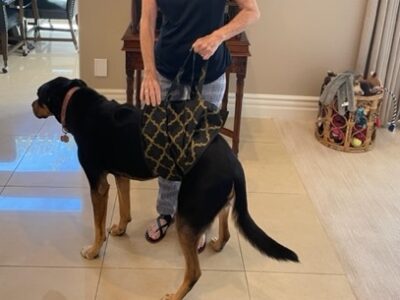
Would you be surprised if I said the majority of pet owners don’t know the best way to carry a small dog? It’s true. The most common way people lift and hold a little dog could cause the pup to have back problems later in life.
Our instinct is to scoop them up with one arm and straddle their body over it. The technique leaves their back end and legs dangling. It also places undue stress on the dog’s spine because their entire bodyweight is being unevenly distributed over a person’s arm.
Because many small breed dogs are prone to spine problems, like Intervertebral Disc Disease (IVDD), it’s important to learn the technique that’s best for their health.

Ask & Discover
Get personalized content recommendations and answers drawn from our website. Simply type your question or topic of interest, and our AI assistant will help you find relevant articles, tips, and insights. You can also have a natural conversation to explore topics in more depth.
Learning from a top authority
Until I adopted my Beagle, Olivia, all of my dogs have been large German shepherds and shepherd mixes. I never gave any thought to the different ways people lift a little dog.
Then I read an article by holistic veterinarian, Peter Dobias, DVM. He put together a pattern that he saw in his patients.
Dogs that suffer from back problems are usually carried around their underarms with their hind end hanging down over the arm.
Learning this information made me realize I needed to demonstrate the best way to carry a small dog to our readers.
Click here to read Dr. Dobias’ story
The right way lift and carry a dog

Whether your pup is healthy and able-bodied or paralyzed, small breed dogs should always be lifted up with two hands. Never jerk or pull a dog toward you, lift them by their front legs or pick them up by the scruff on their neck.
The goal is to lift the dog and then create a platform with your arms where they can sit in a natural position.
Keep these 3 rules in mind:
- Hold the dog as close to your body as possible.
- Keep the spine straight as you lift.
- Support the front and back end at the same time.
Here are the steps:
- Start by bending down to the dog’s level. Slip one arm around the front of the dog so the head can rest in crook of your arm.
- Slide your other arm under the dog’s stomach, just in front of the hind legs. If this isn’t comfortable for the dog, slide your arm around the outside the hindquarters and lift by supporting the rump and back legs.
- Stand up gently and slowly. Hold the dog close against your chest.
- Make a shelf out of your arms where the pup can sit or lie down.
Caveat: Don’t hold your dog upright for a long period of time. It stacks the spine and adds pressure.
Setting your dog down
Always place the dog down with his paws facing the floor, not on his back or side. If your pet isn’t able to stand, lie him down while he’s still in your arms and then gently slide your arms out from under the body.

Get the Essential Guide
The Essential Guide of Products for Handicapped Dogs e-book is a labor of love for me. I wrote it to answer your most pressing questions about where to find the best products for your wheelchair dog. You’ll find products you didn’t know existed and each will improve your dog’s quality of life. Print a copy and keep it by your side.
Here’s a video about the correct steps to carry a small breed dog.
Help for an injured or large breed dog
If your dog is hurt or too heavy to hold, an ordinary bath towel can be used as an emergency sling. The technique’s called towel walking or sling walking. It allows you to safely lift and move your dog without putting excess pressure on the spine, organs and joints.
All you need is a large bath or beach towel that’s strong enough to support the weight of your dog. Pass the towel under your pet’s belly and use the ends as handles for you to grab.





I’ve been a reader for years. My rescue pug Addie is 13 and has trouble getting up from the floor. For my first disabled pug Rocky we laid yoga mats all over the floors. It is not possible to do that this time. I’ve tried infant socks with grippies but they don’t help much. Do you know of a product that would help? Addie is able to walk on her own for short distances but is having trouble with stairs and rising.
Hi Lindsey, Thank you for supporting my blog. I’m sorry to hear about Addie. One product I like that’s made especially to give senior dogs a better grip on slick surfaces is Dr. Buzby’s Toegrips. https://toegrips.com/ They’re little bands that fit around each toe to give extra grip. ToeGrips are inexpensive and stay on for weeks at a time. They can be a little challenging to put, so you might want to go a size bigger than recommended. A good product for climbing stairs is to add a support harness. I’m a big fan of Walkabout Harnesses and GingerLead. You might also want to consider Walkabout Harnesses JAWZ booties for traction indoors or a disposable boot called PAWZ. You can find both on Amazon. Both boots are made to stay in place. In addition, you can lay carpet strips or remnants on the slick areas. I hope one of these ideas help. Warm regards, Sharon